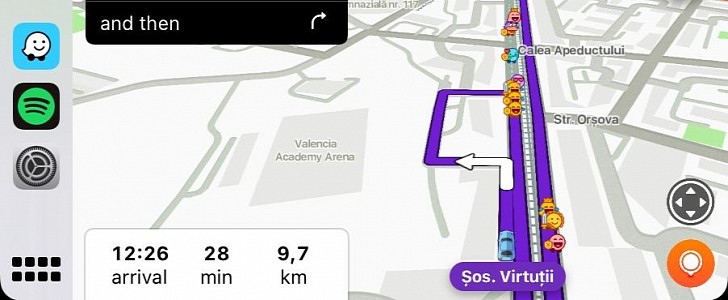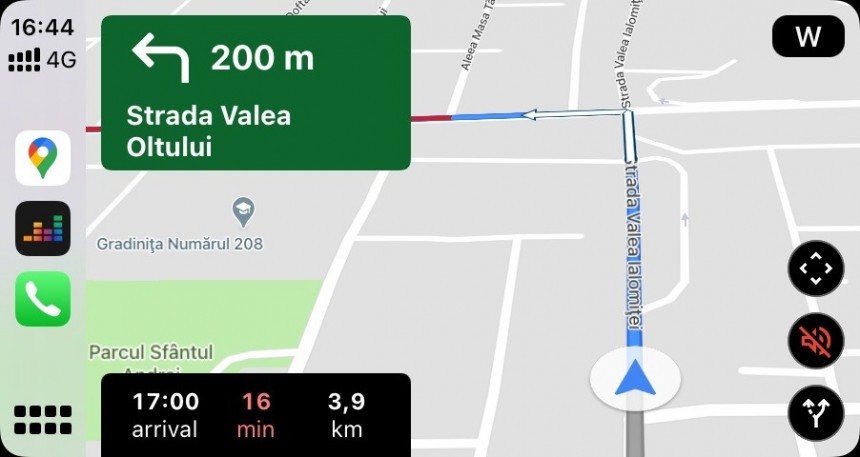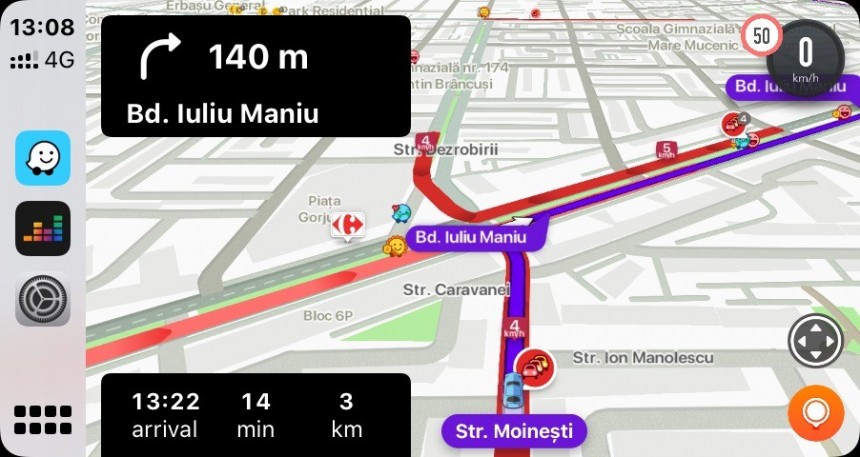While this may sound awkward for less tech-savvy people, Google currently has two separate navigation apps, both available on Android, iPhone, Android Auto, and CarPlay.
We know what you’re thinking, two products that do pretty much the same thing and are available on the same platforms, that can’t be right.
In theory, the two have similar purposes and even use each other’s data to provide drivers with a faster and more convenient way of reaching a defined destination.
But at further inspection, they are as different as they can be.
First and foremost, Google Maps is an all-in-one app. Its primary goal no longer comes down to just providing navigation to drivers, as it can do so much more than that. It also sports walking and biking directions, store information, integration with ride-sharing services, support for exploring a certain region with street-level imagery, business data, reviews, and so on.
Waze, on the other hand, is all about guiding drivers to their destinations by helping them deal with the crazy traffic in their regions. That’s correct, Google Maps can do this too, but Waze uses the power of the large community it has brought together to be insanely accurate. Users are therefore encouraged to report the things they come across on the road, so the app can then determine just the best route for other drivers in the region.
It's pretty clear already that Google has no intention of giving up on either of them, but in the last couple of years, its strategy has become pretty obvious. Google Maps is the one getting all the love, while Waze continues to be focused on the thing it does best. Even if this means rare improvements and almost no new-gen capabilities.
Let’s look at the big updates coming to Google Maps.
First and foremost, Google Maps is already integrated at the OS level in Android Automotive, so it offers advanced capabilities, such as battery level monitoring. In cars powered by this platform, Google Maps can automatically determine if the vehicle has the necessary battery level to reach a certain destination, and if not, it can search for charging stations along the route and suggest a stop.
Outside Android Automotive, Google Maps has recently been updated with a driving mode that improves the overall experience when driving. In essence, a replacement to Android Auto for phones, the new driving mode puts Google Mapsat the core of the entire system, allowing the app to provide navigation using a car-optimized UI running on the mobile device.
Google Maps is also getting new-gen capabilities, such as looking for routes with a lower carbon footprint. The app can therefore determine the estimated fuel consumption for a suggested route and then look for alternatives that would make your trip greener.
Waze, on the other hand, feels trapped in the past.
Not only that the application continues to sport the same old interface (which is often considered by users out there quite childish), but the improvements it has received lately are minor, to say the least.
A few weeks ago, Waze was finally updated with EV charging information, and while this is indeed considered a new-gen feature, such capabilities have been available in Google Maps since 2019.
Other than that, Waze just continues to struggle with a plethora of bugs and performance issues on the platforms it supports. On CarPlay, for example, Waze ended up causing an audio nightmare earlier this year, as the app took over the sound controls and made it impossible to adjust the volume of the playing music. Even when the app wasn’t in focus, that is, and it took the Waze team several updates to deal with the whole thing.
The Waze UserVoice channel is filled with feature requests that would definitely come in handy, including warnings for speed bumps, average speed check zones, and routes with multiple stops, and while some of them are must-have tools for the modern driver, there’s no sign they are even on the roadmap.
Does this mean that Google is planning to go all-in on Google Maps and eventually drop Waze? Not at all. But in the long term, it just looks like Google Maps is the app you’ll want to use, especially if Google ends up bringing in more navigation features and traffic information from Waze.
In theory, the two have similar purposes and even use each other’s data to provide drivers with a faster and more convenient way of reaching a defined destination.
But at further inspection, they are as different as they can be.
First and foremost, Google Maps is an all-in-one app. Its primary goal no longer comes down to just providing navigation to drivers, as it can do so much more than that. It also sports walking and biking directions, store information, integration with ride-sharing services, support for exploring a certain region with street-level imagery, business data, reviews, and so on.
Waze, on the other hand, is all about guiding drivers to their destinations by helping them deal with the crazy traffic in their regions. That’s correct, Google Maps can do this too, but Waze uses the power of the large community it has brought together to be insanely accurate. Users are therefore encouraged to report the things they come across on the road, so the app can then determine just the best route for other drivers in the region.
It's pretty clear already that Google has no intention of giving up on either of them, but in the last couple of years, its strategy has become pretty obvious. Google Maps is the one getting all the love, while Waze continues to be focused on the thing it does best. Even if this means rare improvements and almost no new-gen capabilities.
First and foremost, Google Maps is already integrated at the OS level in Android Automotive, so it offers advanced capabilities, such as battery level monitoring. In cars powered by this platform, Google Maps can automatically determine if the vehicle has the necessary battery level to reach a certain destination, and if not, it can search for charging stations along the route and suggest a stop.
Outside Android Automotive, Google Maps has recently been updated with a driving mode that improves the overall experience when driving. In essence, a replacement to Android Auto for phones, the new driving mode puts Google Mapsat the core of the entire system, allowing the app to provide navigation using a car-optimized UI running on the mobile device.
Google Maps is also getting new-gen capabilities, such as looking for routes with a lower carbon footprint. The app can therefore determine the estimated fuel consumption for a suggested route and then look for alternatives that would make your trip greener.
Not only that the application continues to sport the same old interface (which is often considered by users out there quite childish), but the improvements it has received lately are minor, to say the least.
A few weeks ago, Waze was finally updated with EV charging information, and while this is indeed considered a new-gen feature, such capabilities have been available in Google Maps since 2019.
Other than that, Waze just continues to struggle with a plethora of bugs and performance issues on the platforms it supports. On CarPlay, for example, Waze ended up causing an audio nightmare earlier this year, as the app took over the sound controls and made it impossible to adjust the volume of the playing music. Even when the app wasn’t in focus, that is, and it took the Waze team several updates to deal with the whole thing.
The Waze UserVoice channel is filled with feature requests that would definitely come in handy, including warnings for speed bumps, average speed check zones, and routes with multiple stops, and while some of them are must-have tools for the modern driver, there’s no sign they are even on the roadmap.
Does this mean that Google is planning to go all-in on Google Maps and eventually drop Waze? Not at all. But in the long term, it just looks like Google Maps is the app you’ll want to use, especially if Google ends up bringing in more navigation features and traffic information from Waze.











